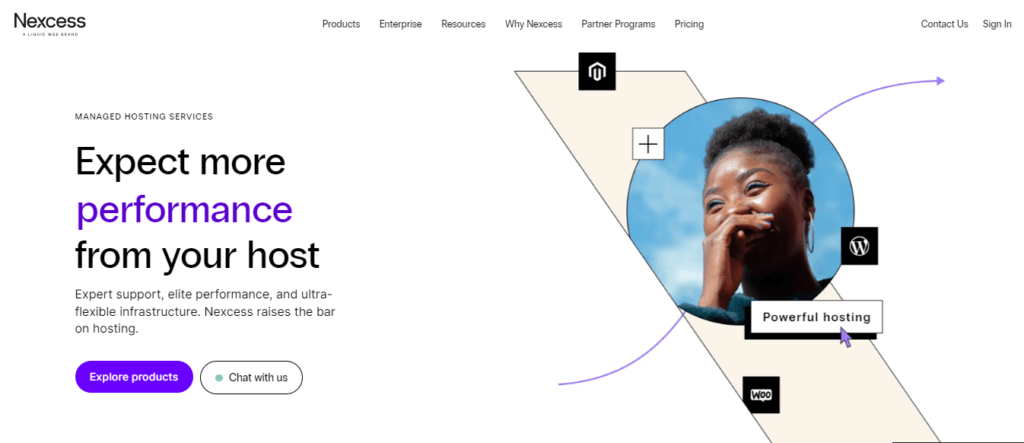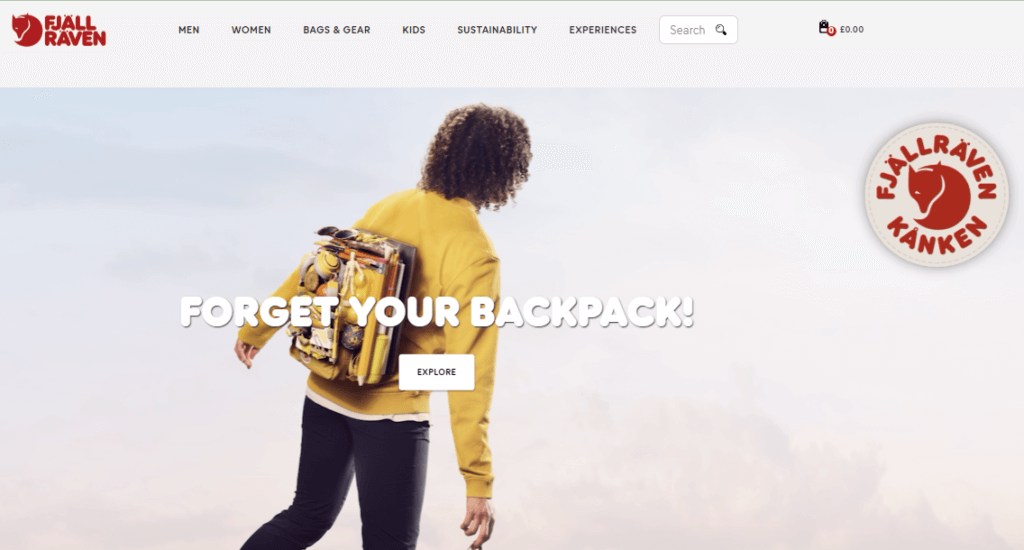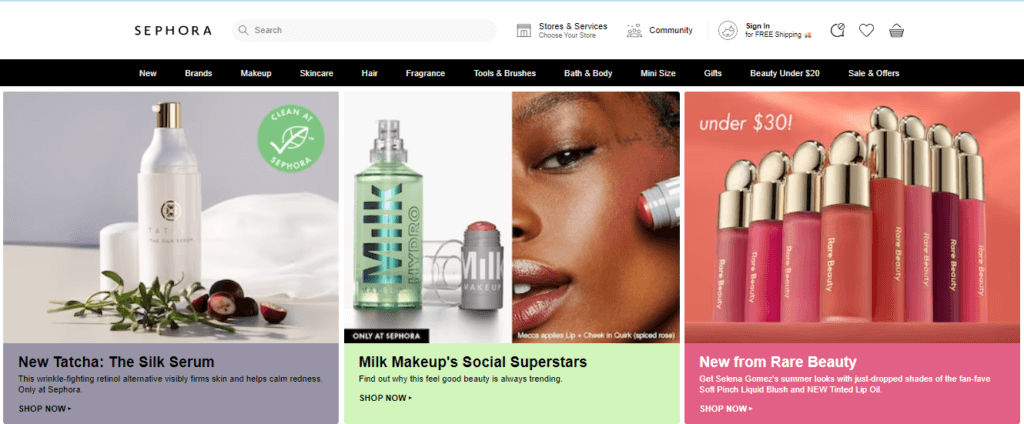Retargeting, or remarketing, is a valuable digital marketing strategy that plays a significant role in the success of ecommerce businesses.
By effectively targeting potential customers who have shown an interest in your products or services, retargeting can increase conversions, reinforce brand awareness, and encourage customer loyalty.
In this blog post, we will explore effective retargeting strategies for ecommerce, including audience segmentation, personalization, frequency management, cross-channel retargeting, and optimization techniques.
Understanding Retargeting
Retargeting, also known as remarketing, is a digital marketing strategy that aims to reengage individuals who have previously interacted with a website or expressed interest in a product or service. Its purpose is to target these potential customers with customized ads or messages, increasing the likelihood of converting them into actual buyers.
In the context of ecommerce, retargeting works by placing a small piece of code, known as a pixel, on a website. This code tracks the behavior of users, such as products viewed, items added to cart, or pages visited.
When these users leave the website without making a purchase, retargeting tools use this data to display tailored advertisements to them as they browse other websites or platforms. These ads can serve as reminders or incentives to revisit the ecommerce site and complete their purchase.
By implementing retargeting strategies, ecommerce businesses can effectively reach out to individuals who have already shown an interest in their products or services, thereby maximizing their chances of driving conversions and increasing sales.
Benefits of Retargeting
Retargeting offers several valuable benefits for ecommerce businesses. Let’s explore some of the key advantages:
- Increased conversion rates and ROI: It allows you to target individuals who have already shown an interest in your products or services. By presenting them with personalized ads or messages, you can remind them of their initial interest and encourage them to make a purchase. This targeted approach often leads to higher conversion rates and a better return on investment (ROI) compared to traditional advertising methods.
- Enhanced brand awareness and customer engagement: It keeps your brand top-of-mind for potential customers who have already engaged with your website. By consistently displaying relevant ads across different platforms or websites they visit, you can reinforce brand awareness. This repeated exposure increases the chances of customers remembering your brand and returning to make a purchase. Additionally, retargeting ads can provide opportunities for customer engagement and interaction, fostering a deeper connection with your audience.
- Building customer loyalty and repeat business: It helps in building customer loyalty by consistently reminding previous visitors about your brand and offerings. By staying in front of potential customers, even after they’ve left your website, you can increase the likelihood of repeat purchases and encourage customer retention. Retargeting allows you to nurture relationships with your customers and cultivate their loyalty over time.
Effective Retargeting Strategies
Retargeting is a powerful digital marketing strategy for ecommerce. However, to be successful, you need to implement effective strategies that align with the goals of your business. Here are some effective retargeting strategies to help you drive ecommerce success:
Segmenting your audience
Segmenting your audience involves dividing your website visitors into different groups based on their behavior, demographics, or preferences. This allows you to create customized retargeting messages that resonate with each segment, increasing the chances of conversion. Here are some tips for effective audience segmentation:
- Behavioral segmentation: Divide your audience based on their actions on your website, such as products viewed, pages visited, or items added to their cart.
- Demographic segmentation: Divide your audience based on factors such as age, gender, location, or income, which can help you create targeted ads that appeal specifically to each group.
- Preference segmentation: Divide your audience based on their interests or preferences, such as categories of products they’ve shown an interest in, to deliver personalized ads that are more relevant.
Personalization and Dynamic Ads
To maximize the effectiveness of your retargeting campaigns, implementing personalization and utilizing dynamic ads can greatly impact your results. Here are some strategies to consider:
- Utilizing personalized recommendations: Leverage the data you have on your audience to provide personalized product recommendations. This can be based on their browsing history, purchase behavior, or even similar products that others have purchased. By tailoring your ads to each individual’s preferences, you can increase the chances of capturing their attention and driving conversions.
- Displaying relevant product ads: Show ads that align with the specific products or services that a user has shown interest in. By presenting them with ads featuring the products they’ve engaged with, you can remind them of their initial interest and encourage them to revisit your website and make a purchase.
- Dynamic ads: Utilize dynamic ads that automatically display recently viewed or abandoned products. These ads dynamically update based on users’ browsing behavior, ensuring that they see the products they were interested in, even if they’ve moved on to another platform or website. This personalized approach can significantly increase click-through rates and conversions.
Frequency Ad Management
While retargeting can be very effective, it’s essential to find the right balance between reminding customers about your products and overwhelming them with ads. Here are some strategies to optimize your frequency ad management:
- Finding the right balance: It’s important to deliver timely, well-tailored ads that remind customers of your products or services without becoming intrusive or annoying. Bombarding customers with too many repetitive ads can be counterproductive, and they might end up ignoring them altogether, leading to wasted ad spend.
- Setting frequency caps: Avoid ad fatigue by limiting the number of times an individual sees a particular ad. Frequency caps can help prevent customers from feeling overwhelmed or annoyed, increasing the chances that they will engage with your ads positively.
Cross-Channel Retargeting
To maximize the effectiveness of your efforts, utilizing multiple channels to reach customers at different touchpoints is crucial. Cross-channel retargeting allows you to reinforce your messaging and engage with customers through various platforms and channels. Here’s how you can make the most of cross-channel retargeting:
- Coordinate retargeting efforts: Consistency is key. Coordinate your efforts across multiple channels, such as social media, display ads, and email marketing. This ensures that your messaging stays consistent and provides a seamless experience for the customer, regardless of the channel they are using.
- Leverage social media: Use social media platforms to retarget customers who have shown interest in your products or visited your website. Platforms like Facebook, Instagram, and Twitter offer powerful retargeting options that allow you to serve relevant ads to your audience based on their previous interactions.
- Utilize display ads: Display ads on various websites and platforms can reach a broader audience and reinforce your brand presence. Display ads can effectively remind customers about your products or services and encourage them to take action.
- Employ email marketing: Leverage your email marketing strategy to retarget customers who have shown interest or abandoned their shopping carts. With personalized email campaigns, you can send targeted messages, promotions, or reminders to drive customers back to your website.
Measuring and Optimizing Retargeting Campaigns
Tracking Performance Metrics
To ensure success in your campaigns, it’s crucial to track and measure key performance metrics. This analytical data provides valuable insights into the effectiveness of your campaigns, helping you make data-driven decisions to optimize your strategies.
Here are some metrics that you should consider tracking:
- Conversions: Measure the number of conversions attributed to your efforts. Conversions indicate the number of customers who have completed a desired action, such as making a purchase, filling out a form, or downloading a resource, due to your retargeting ads.
- Click-through rates (CTR): CTR measures the percentage of people who clicked on your retargeting ads compared to the number of impressions served. A high CTR indicates that your ads are engaging your audience and driving them to take action.
- Engagement metrics: Track engagement metrics like time spent on site, the number of page views, or bounce rate of visitors who were retargeted. These metrics help you understand how effectively your retargeting ads are driving engagement and keeping visitors interested in your website.
A/B Testing and Optimization
A/B testing is a valuable strategy for optimizing your retargeting campaigns. It allows you to experiment with different ad formats, messaging, visuals, and other variables to determine which variations perform the best. By conducting A/B tests and analyzing the results, you can make data-driven optimizations that improve the effectiveness of your retargeting efforts.
Here’s how you can leverage A/B testing to optimize your retargeting campaigns:
- Experiment with different ad formats: Test different ad formats, such as static images, carousels, videos, or interactive ads, to see which ones resonate best with your audience. You can analyze metrics like CTR, engagement, or conversion rates to determine which ad formats are most effective in driving the desired actions.
- Try different messaging: Test different messaging approaches, taglines, or call-to-actions in your retargeting ads. Assess the impact of different messaging on customer engagement and conversion rates. This will enable you to identify the most persuasive and compelling messages that resonate with your audience.
- Vary visuals: Test different visual elements, such as colors, images, or graphic styles, to see how they affect user engagement and response. Visuals play a crucial role in capturing attention and conveying your message effectively, so it’s essential to find the visuals that resonate with your target audience.
- Optimize campaigns based on data-driven insights: Analyze the results of your A/B tests and identify the winning variations. Make data-driven optimizations to your campaigns based on the insights gained. This could include adjusting bidding strategies, targeting specific audience segments, or refining your messaging for better results.
Case Studies and Success Stories
Real-life examples of ecommerce businesses that have achieved success through retargeting can be quite insightful. Here are some examples of case studies and success stories that highlight the effectiveness of retargeting campaigns:
Kissmetrics

Kissmetrics, a marketing analytics firm, implemented a retargeting campaign aimed at website visitors who abandoned their carts. By focusing on retargeting these visitors, who had added items to their carts but failed to complete the checkout process, Kissmetrics achieved significant improvements in key performance metrics.
The retargeting campaign led to an impressive 509% increase in click-through rate (CTR). This means that the retargeted ads were highly effective in capturing the attention of the targeted audience and driving them back to the website.
Moreover, the campaign resulted in an 85% increase in conversions, indicating that a substantial number of those retargeted visitors went on to complete their purchases. This shows the power of reminding potential customers about the items they were interested in and motivating them to take action.
Additionally, the retargeting efforts contributed to a 32% increase in revenue for Kissmetrics. By effectively engaging with visitors who had shown interest in their products but hadn’t made a purchase, the company was able to drive more sales and generate a higher revenue stream.
Fjällräven

Fjällräven, an outdoor apparel brand, developed a successful retargeting campaign by leveraging dynamic ads. The key feature of this campaign was the use of real-time dynamic products, which allowed Fjällräven to show customers the exact products they had shown interest in but hadn’t yet purchased.
By personalizing the ad experience in this way, Fjällräven achieved remarkable results. The campaign led to a noteworthy 8.4% increase in revenue, demonstrating the effectiveness of tailoring the ads to match customers’ interests and preferences. This personalized approach created a stronger connection with potential customers and motivated them to make a purchase.
Fjällräven experienced a significant 162% boost in click-through rate (CTR) as a result of the retargeting campaign. This means that the dynamic ads capturing the attention of the retargeted audience were highly compelling, resulting in more clicks and engagements.
Sephora

Sephora, a beauty retailer, developed a successful retargeting campaign by targeting customers who had viewed specific products but did not make a purchase. The campaign focused on displaying ads that featured images of the products the customers had viewed and were paired with complementary items.
The retargeting campaign led to a 632% increase in click-through rate (CTR), demonstrating the effectiveness of targeted ads that showcase products people had shown interest in. This means that the ads were effective in capturing the attention of customers who had previously engaged with Sephora’s products and motivating them to return to the website to engaging with new products.
Additionally, the campaign resulted in a 75% increase in conversion rates, which means that the personalized and tailored approach to advertising resonated well with customers.
Overcoming Challenges and Best Practices
Retargeting campaigns can be highly effective in driving conversions and revenue, but they also come with their own set of challenges. In this section, we’ll address some common challenges in retargeting campaigns and provide best practices for maximizing their effectiveness.
Addressing Common Challenges in Retargeting Campaigns and How to Overcome Them
- Ad Fatigue: Over time, retargeted ads can become repetitive and lose their impact. To overcome ad fatigue, it’s essential to regularly refresh your creatives and messaging. Experiment with different ad formats, visuals, and copy to keep your retargeting ads fresh and engaging.
- Audience Segmentation: One challenge in retargeting campaigns is effectively segmenting your audience based on their behavior and level of engagement. Invest time in analyzing and segmenting your audience based on specific actions, such as cart abandonment or product page views. This will allow you to create more personalized retargeting messages and offers tailored to each segment.
- Frequency Capping: Showing retargeted ads too frequently to users can lead to annoyance and decrease effectiveness. Implement frequency capping to control the number of times an ad is shown to a user within a specific timeframe. This will prevent overexposure and ensure that your ads stay relevant and impactful.
- Conversion Tracking: Accurately tracking conversions and attributing them to retargeting efforts can be challenging. Implement proper conversion tracking methods, such as using tracking pixels and setting up conversion goals in your analytics platform, to measure the impact of your retargeting campaigns accurately.
Implementing Best Practices for Maximizing Retargeting Effectiveness
- Personalization: Use dynamic retargeting to deliver personalized ads that showcase the exact products customers have shown interest in. This can significantly improve the effectiveness of your retargeting campaigns and increase click-through rates and conversions.
- Creative Optimization: A/B test different ad variations to determine which creatives, visuals, and messaging resonate best with your audience. Continuously optimize your creative assets to maximize engagement and conversions.
- Cross-Channel Retargeting: Extend your efforts across multiple platforms and channels, including social media, display advertising, and email. Combining different retargeting channels creates more touchpoints with your audience, increasing the chances of conversions.
- Sequential Retargeting: Develop a sequence of retargeting ads that follow users throughout their customer journey. Start with a generic ad, then progressively show more specific and tailored ads based on their previous actions. This helps guide potential customers towards conversion.
- Timing and Frequency: Determine the optimal timing and frequency for your retargeting ads based on your customers’ behavior and purchase cycle. Experiment with different combinations to find the right balance that keeps your brand top of mind without being intrusive.
Final Thoughts
Retargeting is a powerful strategy that can greatly benefit ecommerce businesses. In this guide, we’ve explored the benefits of retargeting and provided insights into how it can be effectively implemented.
Recapping the benefits, retargeting allows businesses to:
- Re-engage with potential customers who have shown interest in their products or services.
- Deliver personalized ads that showcase relevant products, increasing the likelihood of conversions.
- Increase brand recognition and stay top of mind with potential customers.
- Drive higher click-through rates (CTR) and conversion rates, ultimately boosting sales and revenue.
Given the significant impact retargeting can have on ecommerce success, it is highly encouraged for businesses to leverage retargeting strategies in their marketing efforts. By implementing retargeting campaigns, businesses can recover missed opportunities, build stronger customer relationships, and drive more conversions.
Take advantage of retargeting and other marketing strategies and achieve increased success, conversions, and revenue. Contact Mapplinks today and elevate your business to the next level.



